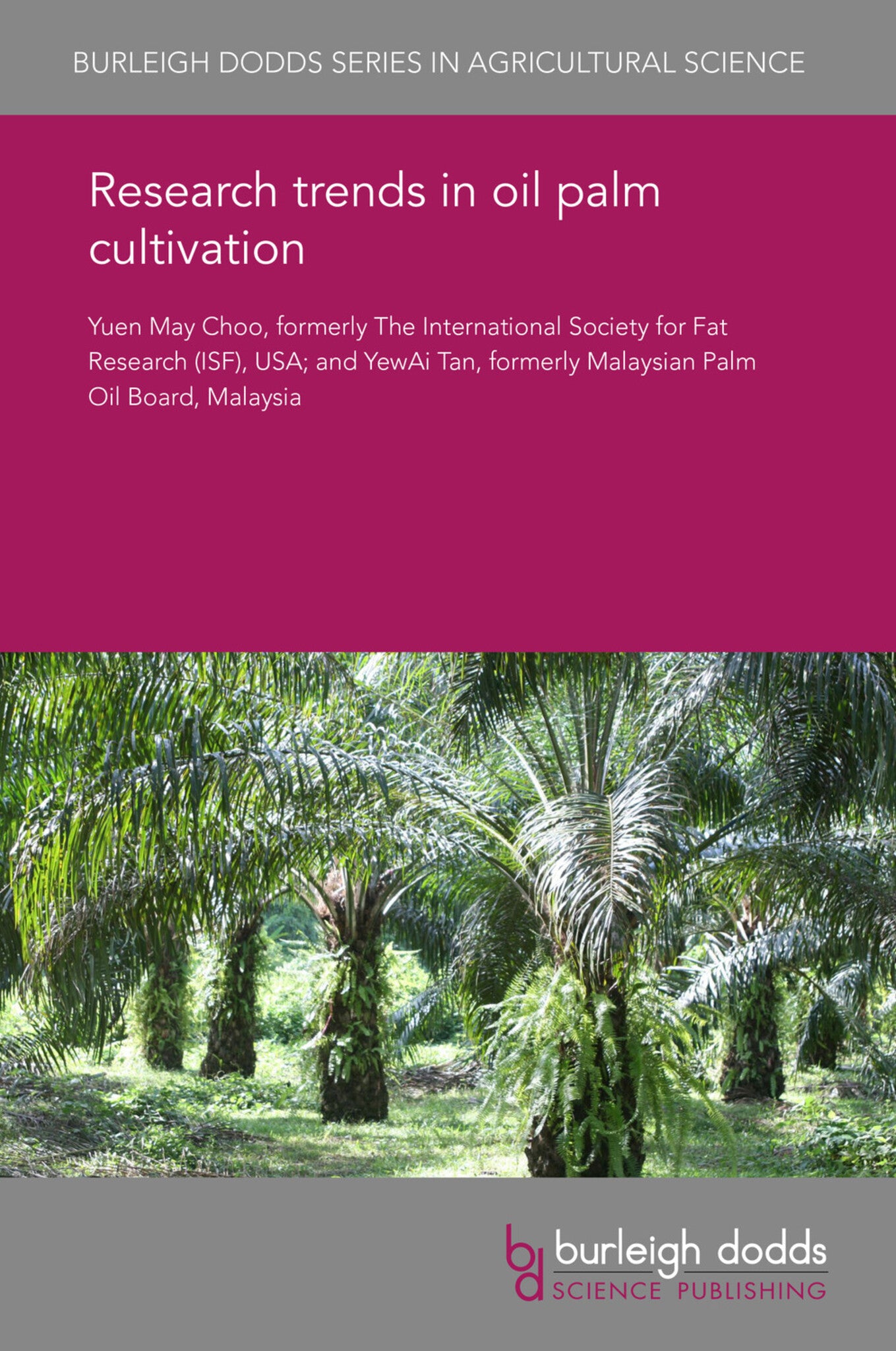We're sorry. An error has occurred
Please cancel or retry.
Research trends in oil palm cultivation
Regular price
£25.00
Sale price
£25.00
Regular price
£25.00
Unit price
/
per
Sale
Sold out
Re-stocking soon
Since its establishment as a commercial crop in Malaysia in 1917, palm oil has become the most important vegetable oil traded in the world. Its standing in the world market is attributed to the oil...
Read More

Some error occured while loading the Quick View. Please close the Quick View and try reloading the page.
Couldn't load pickup availability
- Format:
-
12 February 2018

Since its establishment as a commercial crop in Malaysia in 1917, palm oil has become the most important vegetable oil traded in the world. Its standing in the world market is attributed to the oil’s versatile applications, stable supply and affordability. With the estimated global world population reaching nine billion by 2050, the supply of palm oil must grow to help meet the demand for vegetable oils. This chapter summarises the trends in research which have been driven by key challenges faced by the industry. It covers the establishment of oil palm as an economic crop, the improvement of yield by selective breeding, the use of genomics to expedite research and a holistic approach to remodelling cultivation systems for eco-efficiency.

Price: £25.00
Publisher: Burleigh Dodds Science Publishing
Imprint: Burleigh Dodds Science Publishing
Series: Burleigh Dodds Series in Agricultural Science
Publication Date:
12 February 2018
ISBN: 9781838794613
Format: eBook
BISACs:
TECHNOLOGY & ENGINEERING / Agriculture / Sustainable Agriculture, Tropical agriculture, TECHNOLOGY & ENGINEERING / Agriculture / Tropical Agriculture, TECHNOLOGY & ENGINEERING / Agriculture / Agronomy / General, Sustainable agriculture, Agronomy and crop production

1 Introduction 2 Establishment of oil palm as an economic crop 3 Yield improvement 4 Oil palm genomics and genetic engineering 5 Cultivation with minimal environmental impact 6 Conclusion 7 Where to look for further information 8 References



